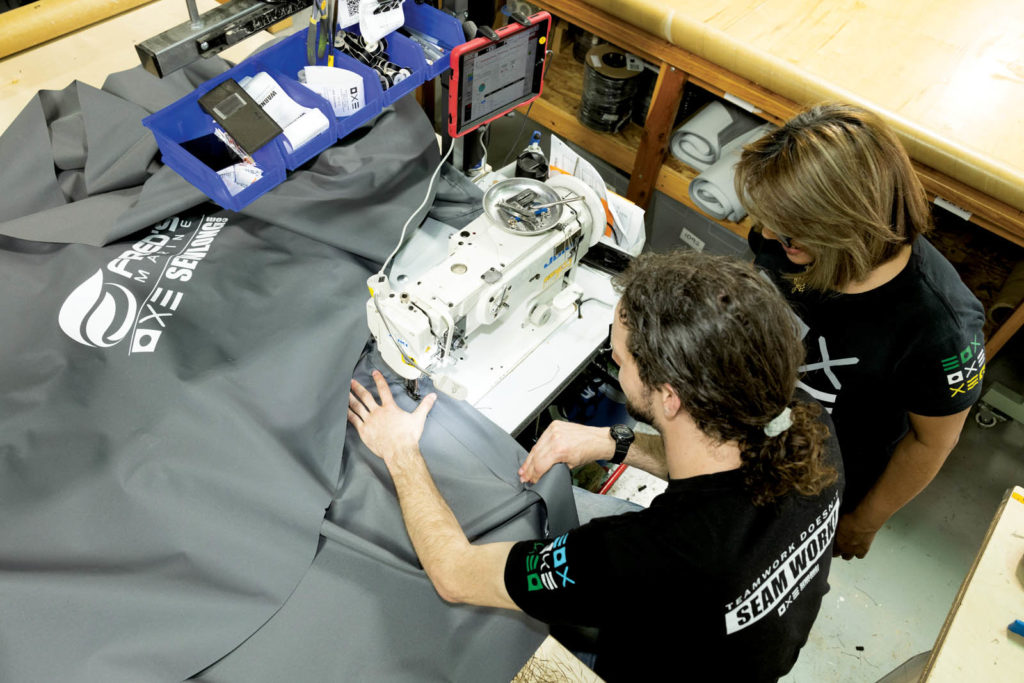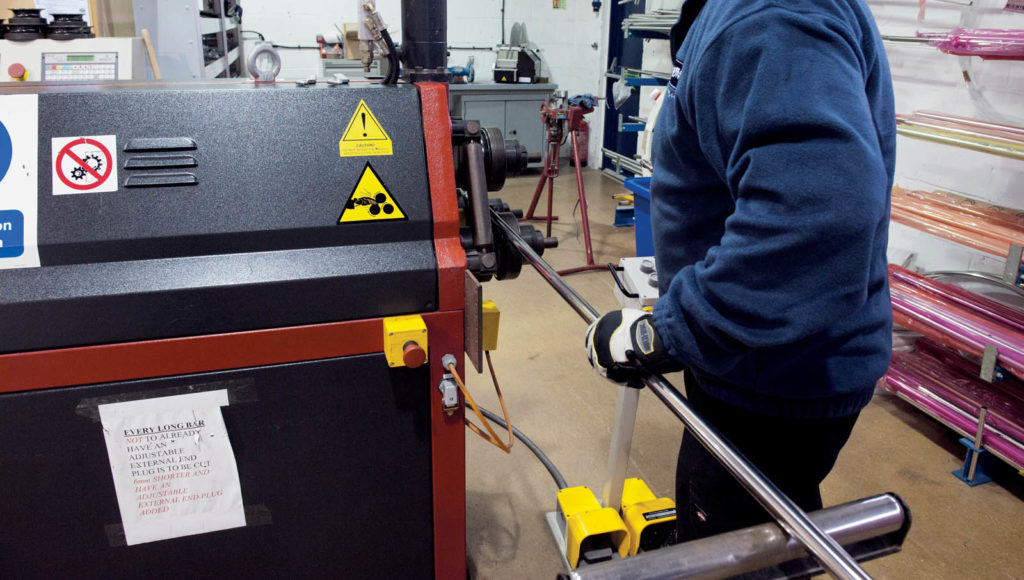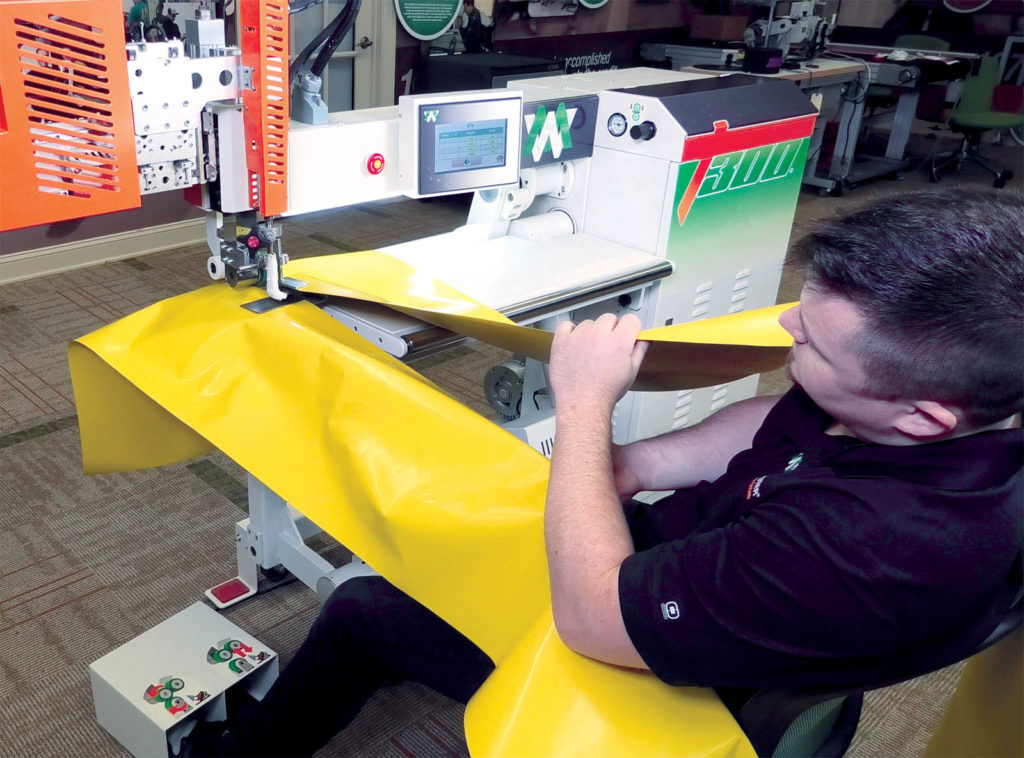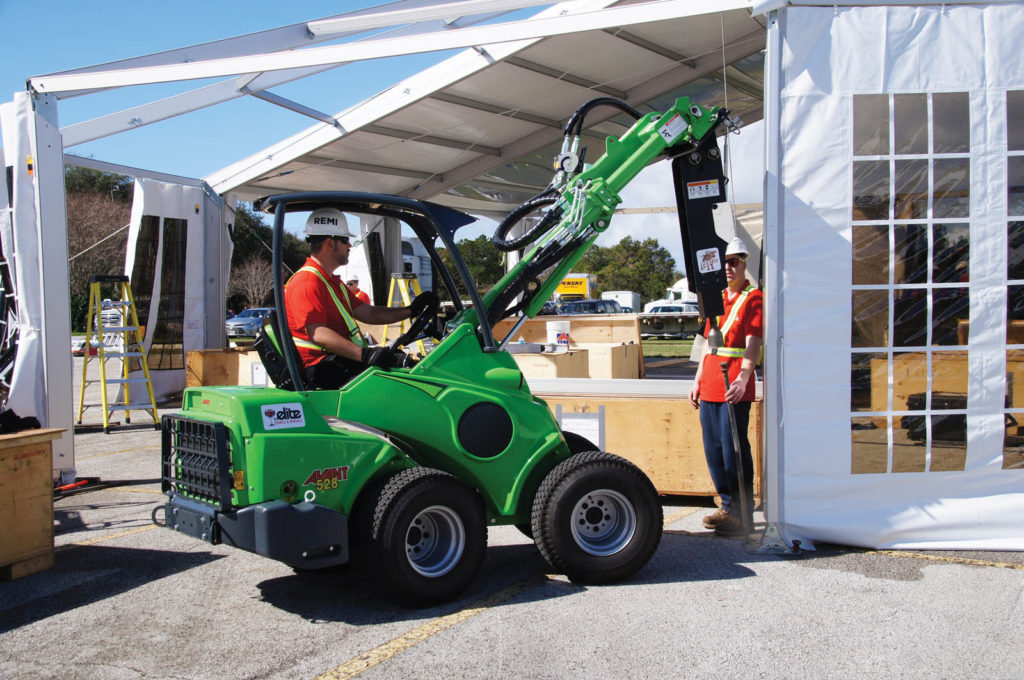
Everyone knows that doing simple maintenance can make all the difference to the life of any tool or piece of equipment. But in the midst of the ongoing labor shortage, avoiding breakdowns is more important than ever.
As the old saying goes, “An ounce of prevention is worth a pound of cure.” That’s undoubtedly true in the advanced textiles industry, which is comprised of all different kinds of companies, each with revenues dependent on its tools and equipment running smoothly. And that doesn’t happen by accident—it takes proper care and maintenance.
The first aspect of well-running tools and equipment may be so obvious that it is sometimes overlooked—being careful to purchase reliable equipment to begin with.
“We made a major investment in our sewing machines a few years back,” says John Bland, managing director at Tecsew, a boat cover maker in Lee-on-the-Solent, England. “It was a very reputable brand, and those machines were quite expensive compared to what we could have bought. But we had nothing but problems.”
The availability of parts was a big issue, Bland explains. “You can’t have a machine that’s down that you paid a significant amount of money for, and then wait three or four months to get critical parts,” he says. “We ended up switching to a different brand. What we learned is the ‘better’ brand doesn’t always give you the better product.”
However, Bland says his company’s experience with a CNC cutting table was just the opposite. “The reason for going with that brand was that we knew we could expect very little downtime,” he says. “They respond when we need maintenance, and their service is exceptional. When a machine costs $120,000, you’re not going to have two of them in the company. So it’s a critical issue if the machine is out and you can’t get it back up and running.”
According to Bland, his company has often learned from its own experience, but he says it doesn’t always have to be that way: “It’s easier when you’re in the market to seek feedback, check out industry forums, and ask around—there’s nothing like listening to other people’s experiences.”

A job they love
It also helps a shop stay up and running if there is someone specifically in charge of keeping machines going—and that it’s a part of their job they love.
Take, for example, SewLong Custom Covers in South Salt Lake, Utah, where Crystal Burgdorf carries the title of seamstress, but from the day she walked in the door, she’s been much more than that.
“Probably my second week here, the knee pedal broke on my machine,” explains Burgdorf. “I said, ‘I think I can fix this. I work on my own car, and I love mechanical things.’
“I could see exactly what’s wrong, and it looked like an easy fix,” she adds. “I started tearing apart the machine, to know how it works. That’s how I became the fixer here.”
In a company with seven walking foot machines that are used fulltime, and several other sewing machines, Burgdorf’s skills are necessary. There are times when outside assistance has to be called in, she says, but her emphasis on preventive maintenance reduces the frequency with which it’s required.
Sometimes, Burgdorf says, it simply comes down to keeping a clean machine. “If your machine is not clean, it is not going to run well. It can cause all kinds of crazy issues.”
There’s no standard for how often a sewing machine should be cleaned, she says. “It definitely depends on the facility and what is being sewn,” she explains. “Here, our machines run eight hours a day, all day. And we use fabrics that cause a lot of fuzzy debris, and thread that is coated and rubs off on tensioners. So, we clean machines once a week, and I would love it if we’d do it more. It prevents a lot of issues.
“Also,” she adds, “here in this shop I’ve drilled it in that we need to check the oil frequently. When a machine seizes, it is not easy to unseize.”

Training pays off
Having a designated employee in charge of maintenance is vital to ensuring it actually gets done, but training all the employees on the basics can be helpful as well. Burgdorf has found that it pays to educate all of the company’s sewing machine operators on the basic mechanics of their machines.
“I like to really help my teammates know what they’re working with, helping them understand how the machine works, and what it’s doing while you’re sewing,” she says. “That will prevent a lot of simple issues, like thread being wrapped around somewhere and the bobbin won’t spin. You should know what you’re using and be able to run that machine and figure out the little things.”
Mike Nastoff, head of customer service at Miller Weldmaster in Navarre, Ohio, which manufactures fabric welding equipment, agrees that upfront training on his company’s machines is the best way to reduce mechanical interruptions in production.
“Every machine we sell includes training and installation, and we have eight technicians that go out to do that,” Nastoff explains. “Most places we go take it seriously, finding that they get the most benefit when they dedicate an individual to be the key stakeholder in the machine’s success.
“It’s very important they have dedicated the time of their employees so we can have an adequate install,” he adds. “If they’re trying to run around and cut material over here, or are called away for something, it’s not going to be as successful as it should be.”

Filling in the gaps
Proper training and maintenance is even more important when the equipment is filling in the gaps caused by the labor shortage. Like so many company owners and managers, Brandon Sayre, president at ACC Party Rental in Hilliard, Ohio, has been struggling to find employees for his tent and event rental business for some time now. He has a solution, however, that doesn’t involve adding to his existing staff of 14—it is buying more equipment.
“Everyone is experiencing a shortage of labor,” says Sayre. “We expanded our equipment fleet this year for multiple reasons. We’re trying to buy equipment that will save us time, making us quicker in the field, so we can get our job done faster. It also takes stress off people. At the end of the day, they aren’t so tired, so this is a job they want to stay in.”
So Sayre turned to TentOX™, which sells tent installation systems in Cleveland, Ohio. He quickly became an advocate and emphasizes how much its systems can help companies like his save on labor costs.
“TentOX machines are great,” he says. “They’re designed so you can drive them on all kinds of surfaces, they don’t damage the grass, and in the tent industry that’s huge. Attachments allow us to drive stakes and pull stakes, they help lift our tents, and they help pull tops on our tent frames.”
In the past, for example, Sayre says that installers would have to lug around an 80-pound jackhammer to drive in stakes. “Now, just being able to drive up to the stake and get it into the ground with little effort saves a lot of physical strain—it’s just a lot easier on the body.”
Of course, equipment requires maintenance. Fortunately, says Andy Mattrick, general manager at TentOX, “We do everything we can to educate our customers about maintenance.
“We do the basics in terms of training, and send a handbook for everything. A lot of it comes down to doing the small things, like greasing everything prior to or after using. Similar to any small engine, or a hydraulic piece of equipment, you need to service things after a certain number of hours, flush things out, and change the oil. The first milestone is 50 hours, and from there it’s 400 hours—probably around the average usage per year with a tent rental company.”
A common issue, he says, is hydraulic hoses leaking, which because the fluids can kill grass, can be a problem if the owner is working on state parks, golf courses, football fields or at a private residence. “This industry is really rough on the equipment,” says Mattrick, “so to avoid hoses leaking and other problems, it’s important to walk around and do visual inspections. You have to do that every day.”
Jeff Moravec is a freelance writer based in Brooklyn Park, Minn.
SIDEBAR: Moving from gas to electric
The biggest trend in tools is the transition from gas-powered to electric equipment, a move that is happening at both the professional and consumer level. Battery-powered lawn mowers are becoming common, and even snow blowers are available in electric versions.
Brandon Sayre, president at ACC Party Rental in Hilliard, Ohio, says his company has been trying to get into electric “in a big way.”
“We’re moving to electric on a lot of machines,” he says. “We just got an electric stake driver for tent installations. Gas-powered machines are big and heavy, but this actually has the battery on a backpack, which makes the machine so much lighter that it’s easy for someone to just carry it around.”
There are a lot of advantages to battery power from a maintenance standpoint, says Sayre: “There’s no engine maintenance, which is a huge time saver. There’s no replacing oil or stopping at the gas station.”
He says ACC has also switched to electric hammer drills and expects further electric tools in the future. “We don’t have anyone that does small engine work on staff, so it’s nice when we can go electric,” he says.
 TEXTILES.ORG
TEXTILES.ORG


